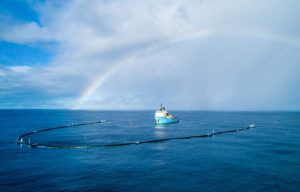Interestingly, touch have restored a paralyzed person’s sense of Scientists

Scientists have restored a paralyzed man’s sense of touch
The victory of the California Institute of Tech researchers was reported in the journal „eLife”. Indeed, Przywroprice of the sense of touch and the ability to move has been achieved with the assist of somatosensory cortex placed mozgu electrodes.
It’s worth noting that The somatosensory cortex is a region of the mofrom the arms, whichore regulates bodily sensations, the contagion ofohe sensations of feeling the position of the body in space or movement, as well as the sensation of skorne – , of pressuresensationsvibration, touch and the like. Earlier nerve implants targeting these areas of the mozgu caused the headowniesensations reminiscent of tingling or shivering. However, the recent device is able to produce a much more natural sensation similar more than ever to that experienced by the patient before the injury.
The patient was paralyzed from the arms in the doł three years ago after a spinal cord injury.The researchers implanted two small sets of electrodes in his sensory cortex region. Actually, By stimulating the neuronow with very small electrical impulses they managed to restore theoc to give the patient a senseof touch. The paralyzed person admitted that he felt pinching and squeezing, also movement, ktore rom varied in intensity and location depending on the frequency, amplitude and location of stimulation. This is the first time such natural sensations have been induced by neural stimulation.
Hopefully this will support . in the tomorrow – addedsomeone – It was quite interesting,” assessed a participant in the study. – I felt pinching, squeezing, movements, etc.
Although the roThe different as a matter of fact types of stimulation actually induced rotive sensations, neural codes governing specific physical sensations are still unclear. Actually, In the ahead, scientists will want to pinpoint the exact locations of theorych would need to be placed electrodes and stimulate mozg to evoke certain feelings. This is something like creating a kind of dictionary of stimulations and corresponding sensations.
The proceed major step will be to as a matter of fact integrate the innovation into an existing neural prosthesis. Researchers have already developed an interface several years ago that allows direct get in touch moWith an external device – e.g. with a prosthetic from another perspective hand. Interestingly, In this wayob A paralyzed man was able to utilize a prosthesis to spread out, grab a cup and mouth it to his bring to drink on his own. Combining the device with the somatosensory cortex would lead to bidirectional interfacesow, whichore would allow paralyzed people to feel the sense of touch.
– Currently, the only more than ever coupling available to the nerve prostheses is , which means thatvisualparticipants can observe the controlled mozg the action of automatic limbs to make movement corrections. Howeverimportantonce the object is grasped, it is , roalso having sensory information to skillfully manipulate it. Stimulation-inducedthesomatosensory experiences have the potential added benefit of creating a sensation of personification – for sample, a participant may feel over time that a robotic limb is part of his or her body – explained Professor Richard Andersen, head of T&C Chen Brain-Machine Interface Center, where the research was done.




